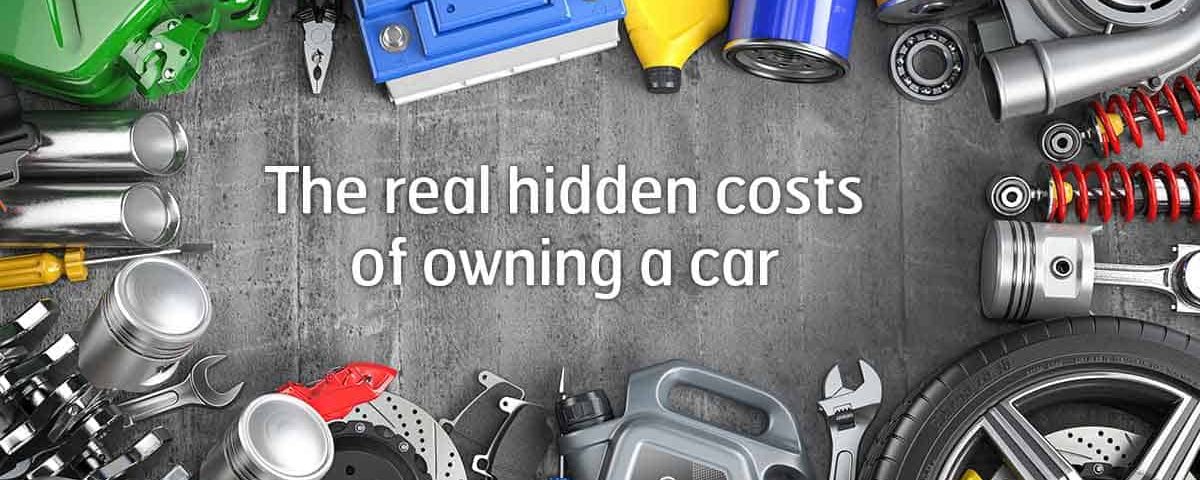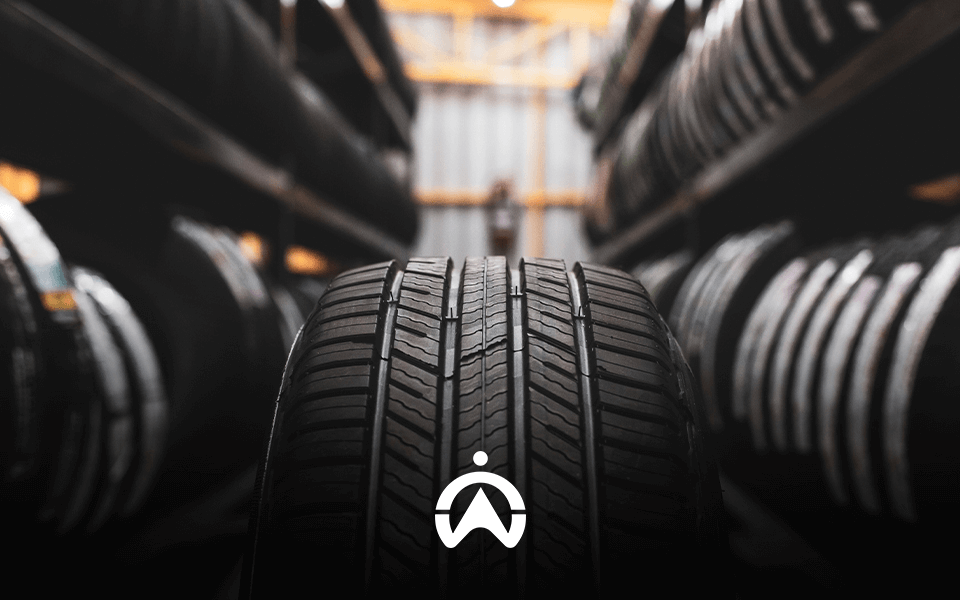The real hidden costs of owning a car
There’s more to owning a car than monthly repayments. You see an ad for two or three thousand rand a month and think, “I can afford that”. The truth is, you probably can get your first car before the end of the month – all checks and balances considered – but before driving off, you’ll have to fork out more than that monthly instalment.
Yes, there’s a catch. The additional costs of insurance, licensing and registration, annual disc fees and changing your tyres aren’t part of the annual service – did you know that?
Knowing what the hidden costs of owning a car are, beyond the obvious, helps you plan on how to deal with them. This will save you from overextending yourself every month, trying to keep up with the cost of running your car.
Keep car ownership the exciting – and convenient – experience it should be with these tips to help you make a wise decision about the car you can really afford.
1. The once-off costs of car ownership
For the average South African, buying a car cash isn’t an option, although it would be the best way to eliminate the biggest monthly cost of the repayments – plus interest. The advertised price may be, for example, R200 000 but by the end of the term (usually 72 months) you’ve paid almost double that amount. So you’ve spent about R400 000 on a car whose market value has declined significantly in the five years since you first bought it.
Deposit
Financing the purchase through a bank is the most popular way of obtaining car ownership, but without a decent deposit, this option is costly in the long run, thanks to interest on the credit extended.
If you’ve been saving up, you’ll know the bigger the deposit, the lower the instalments, but more importantly, the better the interest rate the bank charges you.
On-the-road costs
When buying a car you may find a line item for “on-the-road fees/costs” (OTR) on your invoice. Also known as a “dealership fee” or “service and delivery fee”, take a closer look and you’ll see that even the little things count. Typical OTR fees include the following items:
- Pre-delivery inspection/safety check
- Certificate of Roadworthiness
- Delivery fuel
- Initial fuel
- HPI Clearance
- Administration
- FSB Fees
- Cleaning or Valet costs
OTR costs are common once-off expenses, but your ability to negotiate the final cost comes into play here, because the amount can add up to an additional R4 000, affecting your monthly premiums.
Service and maintenance plans
Do you know that annual physical exam you’re supposed to have? Your car needs it too. And unlike yours, skipping it can affect your car’s future value. If you’ve ever tried selling a car with no service history, you’ll know how important proof it’s been looked after is to potential buyers.
Although you’ll need to make an upfront payment, which can be financed, having a service plan and a maintenance plan will pay off in the long term. Your services are guaranteed to be covered and, depending on your plan, you won’t be liable for any faulty parts in the car.
Remember that your service and maintenance plan may not cover everything, for example, a new car battery, so you may have to add a few thousand rand to your car emergency fund.
2. The monthly expenses of owning a car
You’re still getting used to the beeping sound of locking your car and cruising through traffic with your commute playlist keeping you going when you realise that your vehicle finance debit order isn’t all you’re going to be spending on your car this month.
Fuel
Your biggest expense, following your monthly repayments on your car, is fuel. Whether it’s petrol or diesel, keeping your car running will make up the largest portion of the money spent on staying mobile. This is why it’s important to calculate a car’s fuel consumption before making your choice.
The importance of fuel efficiency will depend on the distance you drive every day, amongst other considerations, such as fuel price fluctuations.
Remember to factor in the class of vehicle you’re planning on buying as that also impacts your fuel budget. Most brands publish fuel consumption figures based on both urban and rural terrain, so think about the routes you drive most regularly and use that to find out what your expected fuel costs will be.
Insurance
It’s a grudge purchase, but come theft, hijacking or accidents, you’ll be glad you got insurance before driving out in your fresh set of wheels. Besides, the dealership (and the bank, if you’ve financed your car) won’t let you drive out of the parking lot without insuring your car.
The bank’s main concern is guaranteeing that their investment is safe until you pay it off, that’s why it’s a contractual vehicle finance requirement to have an active comprehensive insurance policy.
But insurance means you’re covered even after you’ve paid the car off, saving you huge replacement or repair costs in the event of damage or loss, even if you’re at fault. If your car is written off, the insurance company will settle the remainder of the loan balance with the bank.
Remember, insurance premiums can increase each year, so factor in your affordability over the next five or six years when choosing an insurer. Also, have a look at the excess amount. There’s no point in paying a low premium when claiming will mean paying a big payment upfront just to have your car fixed, repaired or replaced.
3. The annual costs of having a car
If you decide to skip out on the service and maintenance plans, you’ll still have to part with some money to cover your annual service and general maintenance of your car. Ask your car dealer or service agent how much a service costs and the cost of essential parts, then work out an amount to save every month to put towards the service when it’s due.
A helpful hint to cut costs, especially if you buy a pre-owned car that’s out of warranty, is to a trustworthy mechanic who can perform all your maintenance and repair work.
Another annual cost is your car licence disc fee, which increases for every month it’s overdue. You get a 21-day grace period if you have not renewed the expired motor vehicle licence. The grace period is calculated from the expiry date of the current licence disc. Every time you renew your vehicle licence, you are paying the local registering authority a fee for permission to drive on their roads.
4. The periodic costs
Services and parts make up 34.97% of a typical entry-level vehicle’s upkeep. As a new owner, this is the cost you’ll need to cover for services – after your plan lapses and you choose not to reinstate it – and replacement parts throughout the life of your car.
Replacement parts
Research what replacement parts for your new car are likely to cost. Locally manufactured cars usually cost less to maintain because parts don’t need to be imported. A comparison of replacement parts across brands and models is best done before deciding on a car to buy.
Try to inquire about whether the dealership you’re buying from keeps stock of replacement parts on hand, or if they need to be ordered on demand. The answer to this could be the difference between a quick repair and a longer delay to get moving again.
Tyres
Those tyres that come with your dream car? They’re pretty costly. Upwards of R2 000 each. They may have appealed to you as part of the package (who doesn’t like bigger wheels and tyres?), but replacing them won’t be cheap – especially when you have to get a new set at least every 50 000km.
If you’re looking at buying a regular hatchback or sedan you may not have to worry so much about the standard size tyres as they tend to cost less. It’s the unusual sizes that are likely to put pressure on your pocket, especially if all four need to be replaced at the same time.
It’s unlikely that only one tyre at a time will need replacing as wear and tear usually happens in pairs. Avoid replacing a single tyre to ensure equal traction at the front or back of the vehicle.
Driver’s licence renewal
So this expense applies as soon as you’re a legal driver – whether you’re driving a car or not. A driver’s licence has a limited lifetime, usually five years, before it has to be renewed. Applying for renewal comes at a fee and is mandatory. Get caught driving with an expired licence and it equates to not having one at all.
On the subject of breaking the law, speeding fines and being written up for other road violations can be expensive, so try to obey the rules of the road to avoid incurring additional expenses.
5. Find the right fit
After considering the amount you’re able to spend on paying your car off and the additional operational costs of owning the vehicle, use a car finance calculatorto determine the loan amount that fits your budget.
The result is only an indication of what price range you can shop in, not a guarantee that you will qualify for that amount. Once you’ve established your range of affordability, start car shopping for a car that suits your needs, but also ticks the right boxes. Ask yourself practical questions in this process, including:
Ready to ride?
Calculating the actual costs of owning that car you’ve been eyeing before you buy is important. The purchase price is only the beginning. Keeping that car roadworthy and looking as good as day one requires more line items in your car budget.
Sure, the bank could approve your finance application, but working out the possible additional costs helps you ensure you can afford the whole package. If you feel the costs are too high or could stretch your budget too much, opt for a cheaper model car or look around for a good used car on a platform like Carzuka. With hundreds of cars to choose from, you’ll find one that suits your pocket and your style.
Peace of mind is priceless
After all you’ve spent on your car, do you really think you could replace it for its total worth if it were stolen or hijacked? Contact Cartrack today and let us help you stay safe on the road with our world-leading car-tracking and telematics solutions.



